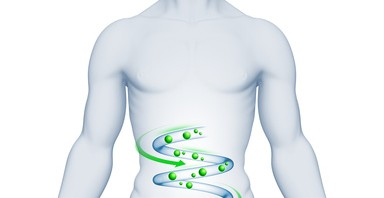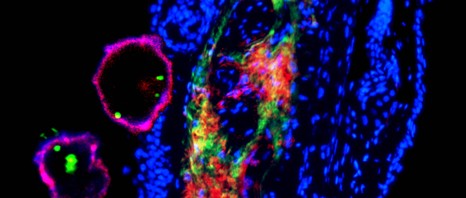METACARDIS (Metagenomics in Cardiometabolic Diseases) is a European project coordinated by Inserm that aims to study the role of the gut microbiota in the development of cardiometabolic diseases (CMDs). Thanks to the support of the European Commission, fourteen partners in six European countries will work together over a five-year period to translate the results obtained with novel CMD diagnosis and treatment methods and pave the way for personalised medicine in CMDs. Researchers and clinicians from the Institute of Cardiometabolism and Nutrition (ICAN) will also be involved in the METACARDIS project.
The aim of the METACARDIS project is to develop and implement personalised treatments for patients with CMDs in order to meet an urgent need for improved patient care and relieve the socioeconomic burden on the health care system. CMDs – which comprise cardiovascular diseases, metabolic diseases and obesity – are a major cause of mortality and morbidity around the world. Their socioeconomic cost is substantial; it is estimated that they alone cost the EU economy more than €192 billion a year (57% due to direct treatments, 21% due to production losses and 22% due to indirect treatments[1]).
The aim of METACARDIS is to study the impact of changes in the gut microbiota on the onset and progression of CMDs and their associated conditions. These conditions manifest in highly different ways and in all likelihood are interlinked by initial common channels and dysfunctions. As a result, it is essential to thoroughly understand the physiopathological mechanisms involved, make detailed early diagnoses and deliver treatments that are tailored to each disease. In other words:
- Find novel shared biological targets and channels that play in role in the progression of CMDs.
- Validate the gut microbiota targets and biomarkers.
- Refine the analysis of patients’ clinical profiles through molecular phenotyping.
- Develop new systems (software) for the integration of environmental data and of patients’ clinical and biological information.
METACARDIS is the first systemic study designed to correlate the gut microbiota with CMD in people.
It brings together groups of European researchers from various disciplines with biotech and industry experts. The teams will have access to state-of-the-art technologies to accelerate the development of novel preventive and therapeutic strategies for CMDs. Amongst these teams are those directed by Karine Clément and Dominique Gauguier of the Cordeliers Research Centre (Inserm Unit 872) and of the university hospital and research complex ICAN, by Serge Hercberg of the Nutritional Epidemiology unit (Inserm Unit 557) and by Hervé Blottière, Joel Dore and Dusko Ehrlich at INRA (France’s National Institute of Agricultural Research).
Work conducted in recent years to characterise the genome of the gut microbiota, i.e. the entire genome of the bacteria in the intestine, has opened up new opportunities in in-depth understanding of the possible channels shared by the various conditions that comprise CMDs.
In oncology, biological signatures that make it possible to predict the characteristics of tumours have been identified. Likewise, research has shown that gene expression models of the gut microbiota vary from one cardiometabolic condition to another. Obese patients presenting insulin resistance, inflammatory syndrome, dyslipidaemia and/or glucose dysregulation are characterised by an alteration in the diversity and composition of their gut microbiota. Some species of gut bacteria have even been found to be associated with coronary vascular diseases. Imbalances in gut intestinal flora therefore may play a role in the development of cardiometabolic conditions.
Patients included in the project in late 2012
Once the METACARDIS project begins in late 2012, its teams will conduct a first series of studies on an already established patient cohort (MetaHIT and Micro-Obes projects; > 200 subjects). This cohort will provide the teams with immediate access to a wide range of clinical, medical and environmental data as well as biological specimens. The teams will thus be able to conduct initial research on CMD biomarkers by means of a metabolomic approach and metagenomic profiling. A second patient cohort with CMDs at various stages will be set up during the project in three countries (France, Denmark, Germany). Enrolment is scheduled to end in mid-2015. More than 2000 patients, nearly half of the cohort, will come from the Heart and Metabolism Centre of Pitié-Salpêtrière Hospital.
Information on the patients’ lifestyle (nutrition, physical activity and psychosocial factors) will be integrated with their clinical and biological data in order to evaluate how they influence the gut microbiota and the progression of associated diseases. This data will be combined with interventional studies that are recognised to reduce the risks of CMDs.
To find out more
Inserm, France
INRA, France
University of Copenhagen, Denmark
European Molecular Biology Laboratory, Germany
University of Gothenburg, Sweden
Flemish Institute for Biotechnology, Belgium
Assistance Publique – Hôpitaux de Paris, France
University of Leipzig, Germany
Danone Research, France
Cargill, France
Chalmers University of Technology, Sweden
Inserm Transfert, France
Biobyte Solutions, Germany
[1] Leal J. et al, 2012, Economic Costs In: European Cardiovascular Disease Statistics





